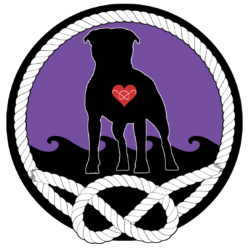There have been many articles on information good breeders suggest for post whelp health for the newborns and dam. Do a search for breeding on The Stafford Knot website in the Library section and you will find several interesting articles submitted by breeders from around the world. I wont go into too many details but I will offer a little informational list of must haves based upon our experiences.
Make sure you have calcium citrate on hand. Its fine to use the convenient tubes but after whelping get yourself a bottle of the higher quality capsules 1000. Also, a B-Complex and DLPA 750. I would also suggest buying a homeopathic kit made for birthing and one for emergency care. Read the books that come with each ahead of time so you are partially familiar with the contents.
Go to the suggested reading list on this page and pick up several good books on whelping/breeding – especially Book of the Bitch and one on newborn care. Sign yourself up for Puppy Culture and pre-watch at least the 1st few videos if not the entire course. Keep pedialyte, lactated ringers solution with both adult and newborn set-ups, colloidal silver 500, tube feeding sets, oxygen, fresh frozen plasma, liver water, whole milk yogurt, fresh raw goat milk, fresh eggs (yolks), a big green cabbage and local raw honey. Do not use cottage cheese thinking you are feeding calcium – go read the package and you will be surprised. Yogurt is a much better choice plus its full of probiotics. Get full fat grass fed sourced.
Get two working thermometers, new batteries for flashlights, thermometer, scales and anything else which requires batteries. Buy a USB laptop red LED light – comes in handy for overnight checks in whelping box. We have USB outlets in our wall outlets and there is one right behind our whelping box where I keep one of these plugged in.
Set up a warming box or drawer. I have both – the box for when/if I have to leave the house to go to the vet – the drawer is the top drawer in a dresser I use for weighing and keeping my charts updated.
Get your essential oils and diffuser, Thieves wash/wipes/cleaner/sanitizer/soaps, etc….put all your vets on speed dial and visit an emergency clinic to pre-fill out forms in case you need to rush there in the middle of the night……on a Saturday/Sunday night…..when your bitch has a temperature of 103.6 and mastitis is setting in – get your Thundershirt out as its perfect for holding that cold cabbage on her teats for a couple hours alternating with warm compresses (a sock filled with rice works well for this heated in microwave or a hot water bottle is also perfect )- you want moist heat to expel milk once her teat is soft – alternating back and forth…..checking for both color and smell to make sure her milk is safe for the babies to nurse from.
Learn how to use lactated ringers to administer fluids. This is very important. Dehydration in both newborn puppies or in the dam can be serious and life threatening. Keep them hydrated!
Buy whatever laundry soap you plan to use in bulk – we use Young Living Thieves and white vinegar for softening. Wash and change whelping box bedding often! Clean the box several times a day with your Thieves spray and a clean cloth like a diaper. Its very important to keep everything clean.
We check temperatures, weights, poop and pee daily – these are simple ways to make sure the health is spot on for your bitch and her whelps. rotate the teats your pups suckle from in smaller litters. Watch for any redness, dark spots, swelling or hardness – watch for this several times per day – mastitis can come on very quickly and its best caught very early. Remember broad spectrum antibiotics can still pass onto puppies through the milk and also can cause nausea. If you can use homeopathics instead and get success try them first.
I’m certain this is not all encompassing information but its just a sleep deprived stream of thought blog entry which I hope has offered someone a little information they didn’t already have in their arsenal. I am not a veterinarian nor am I attempting to replace their advice – I am just offering up info based upon our own experiences – take it or leave it but always seek the advise of medically trained professionals if in doubt.
Below is a list of homeopathic remedies for treating Mastitis
Apis Mellifica… This is a great remedy for painful and swollen glands. This is particularly common after whelping.
Bryonia Alba 30c… is highly beneficial for glands that have become hard. Other symptoms may include the legs being stiff and signs of constipation.
Belladonna 30c… may be prescribed by homeopathic vets for treating hot and swollen glands. The affected dog may also be restless and excited.
Hepar Sulphuris Calcareum 30c… can be used to treat glands that have become painful. There may also be a pussy discharge too.
Phytolacca 6c… may be beneficial for treating painful and hard lumps in the dog’s breast glands. The affected dog may appear listless and the glands may appear blue in color.
Urtica Urens 1 m… can be prescribed by homeopathic vets to help restore milk production as the infection starts to subside.

